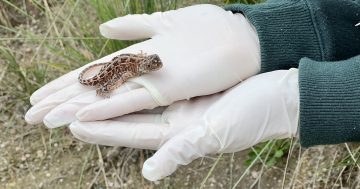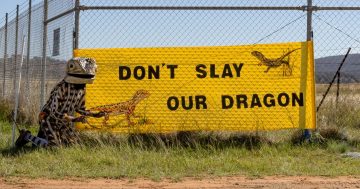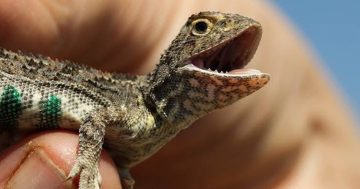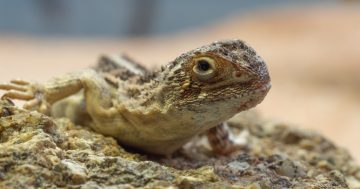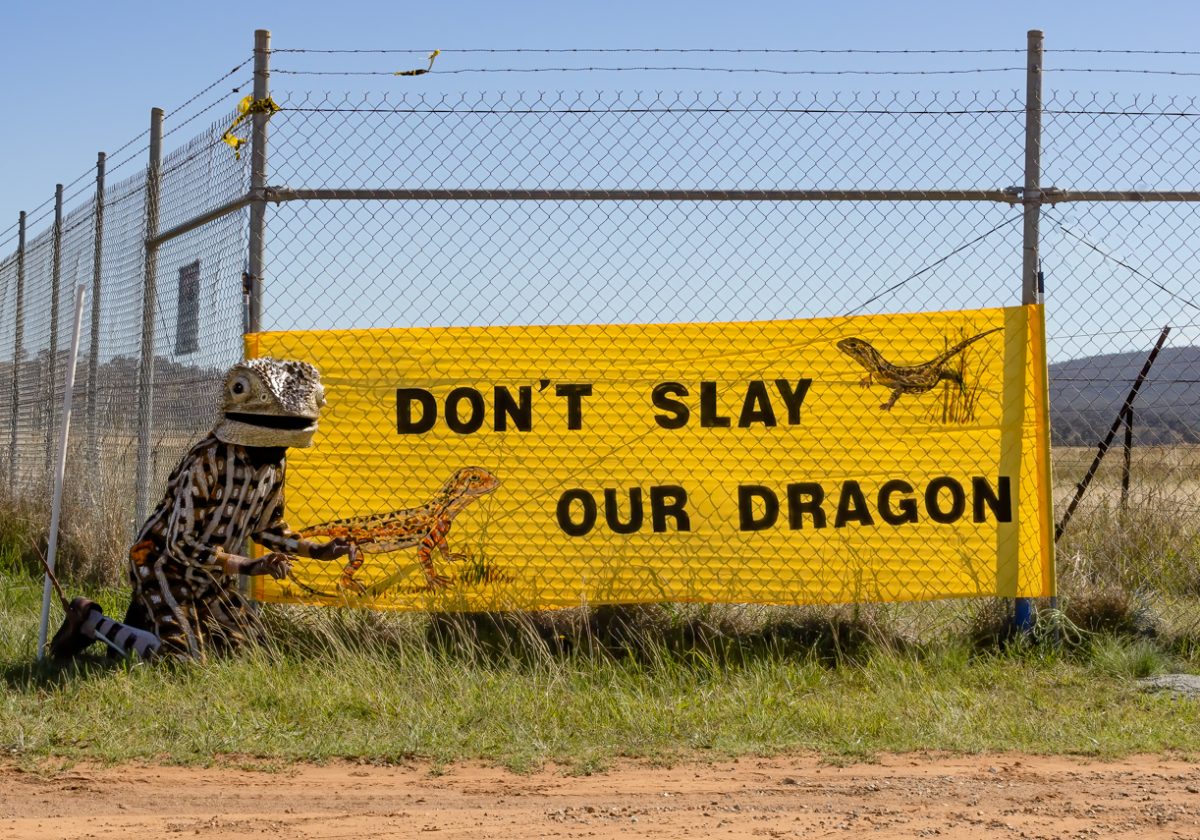
One of many regular protests at the Canberra Airport northern road. Photo: Hedda M.
Canberra Airport will pay the ACT Government $1 million towards a captive breeding program for the Canberra Grassland Earless Dragon – it’s one of the conditions on its new road project imposed by the Federal Government.
The airport will also have to protect and rehabilitate surrounding grassland to “compensate for impacts to the highly degraded habitat that would be impacted by construction”.
The road itself will require several underpasses to facilitate “approved trials” and assess whether the critically endangered lizard species uses them to cross to the other side. Additionally, barrier fencing will be installed to protect the species from “vehicular impacts”.
“The Department of Climate Change, Energy, the Environment and Water (DCCEEW) consulted extensively with the community, relevant species experts and local government agencies during this process,” a DCCEEW spokesperson told Region.
“The variation allows for the upgrade of the Northern Road from gravel to asphalt to improve traffic management around the airport with new and stronger environmental protections through several new conditions considered necessary to avert long-term decline.”
The road, currently gravel, links Majura Road with Fairbairn Avenue, and the Canberra Airport has had approval from the Commonwealth to seal it since 2009 in a bid to improve freight connections across the site.

The road has been gravel for decades. Photo: Conservation Council ACT Region.
But in response to protests earlier this year, the department suspended construction on the southern portion of the road “while options to confirm or strengthen protections for the dragon are being considered”.
The protesters, mainly from the Conservation Council ACT Region and Friends of Grasslands groups, argue the small lizard species now only exists on up to 40 hectares of temperate grassland in the Majura and Jerrabomberra valleys – including this patch of land.
They say the initial approval predates a distinction between different types of dragons.
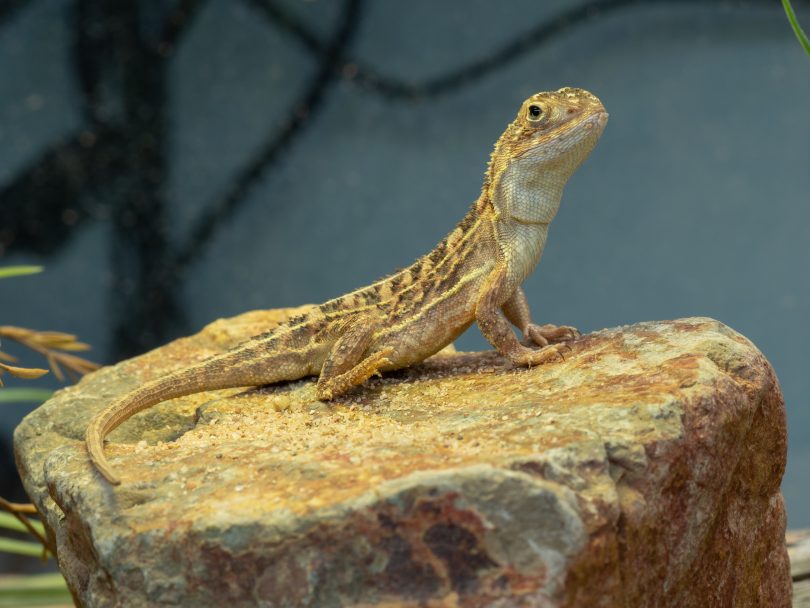
The Canberra Grassland Earless Dragon in the breeding facility at Tidbinbilla Nature Reserve. Photo: Blake Reeves.
“The grassland earless dragon has since been split into four different species, and so Canberra’s species is actually really rare,” director Dr Simon Copland said.
“We don’t really accept that approvals that were granted 15 years ago match the science that has happened since then.”
So far, no individual dragon has been located near the dig site.
The approval variation has done little to assuage the protesters, however, who have been joined by the ACT Greens.
“The approval of the Northern Road at Canberra Airport is a blow to the community and sends a message that our Federal Government does not care about nature,” ACT Greens deputy leader Jo Clay said.
“The offsets and conditions in this road development approval are an attempt to buy the goodwill of the community in exchange for habitat degradation, the annihilation of one of our local critters and potentially the uplisting of many other species who live in temperate grasslands.
“We call on the ACT Labor Government to use all compensation funding from the road development to protect remaining natural temperate grassland habitat, otherwise there will be nowhere left in the wild to reintroduce dragons from the breeding program.”
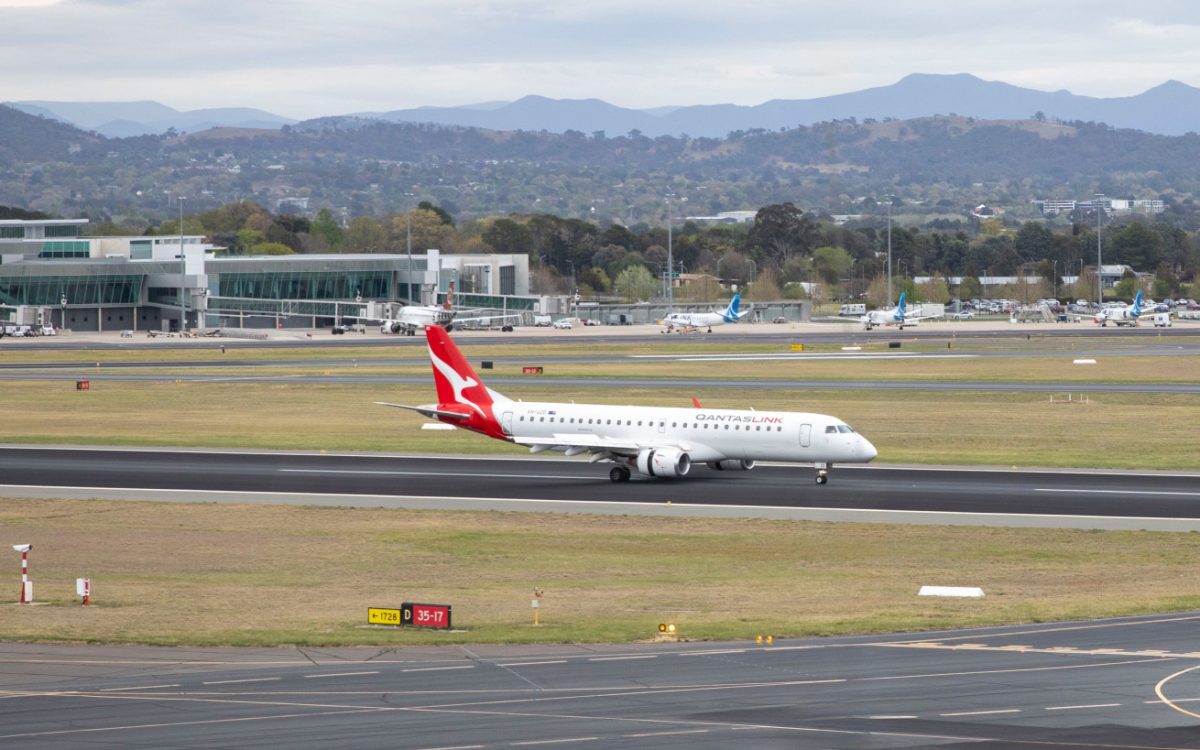
The airport will proceed with road construction “in the coming months”. Photo: Canberra Airport.
Canberra Airport plans to “proceed with the project in the coming months”.
“We proposed additional measures to enhance the nature-positive outcome, which the department has accepted,” a Canberra Airport spokesperson told Region.
“The approval confirms that there’s no increased risk of extinction and no fragmentation.”
The 2025-26 ACT Budget allocates $4.5 million into breeding programs for the Canberra Earless Dragon and temperate grassland habitat restoration.












